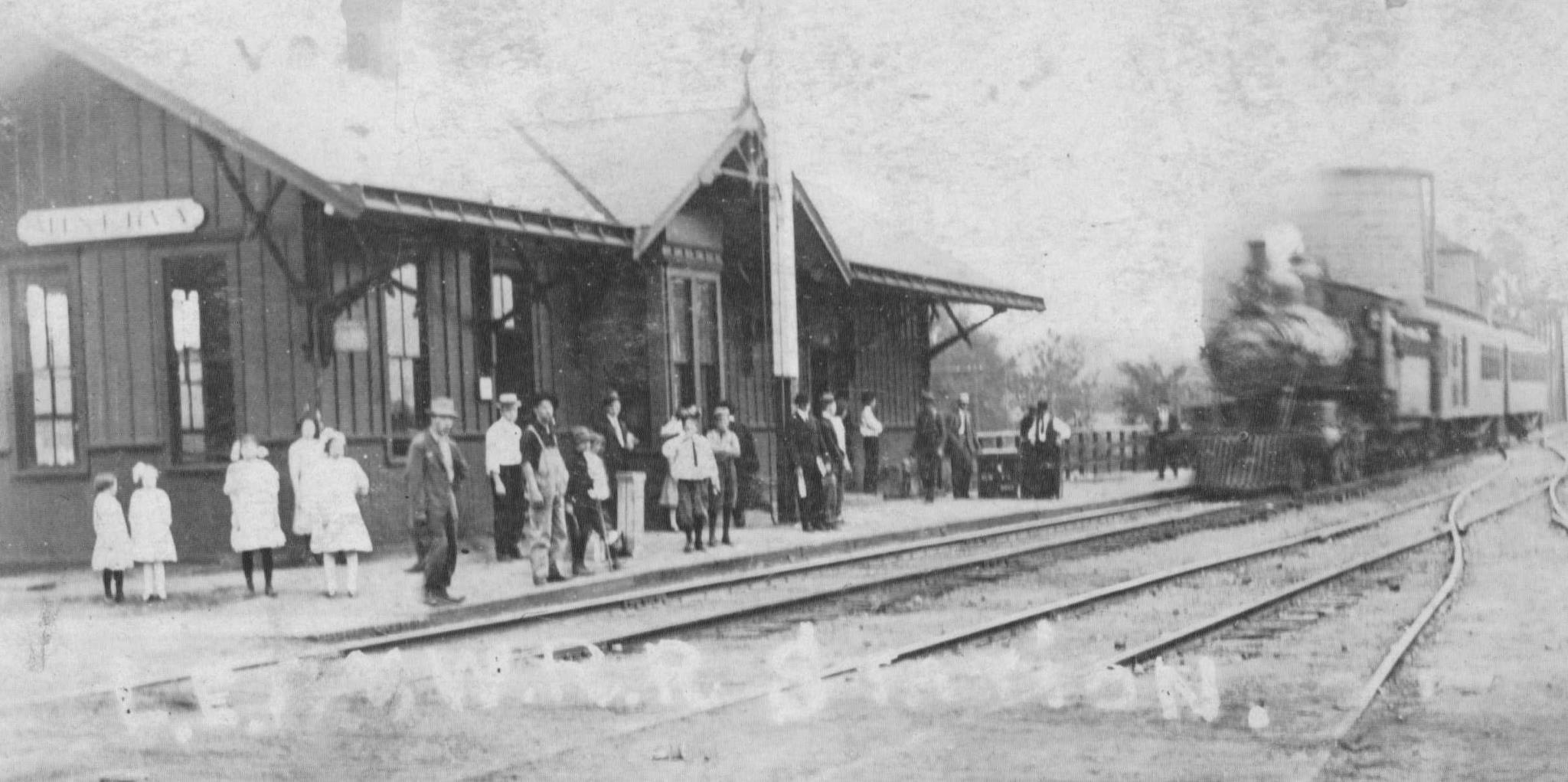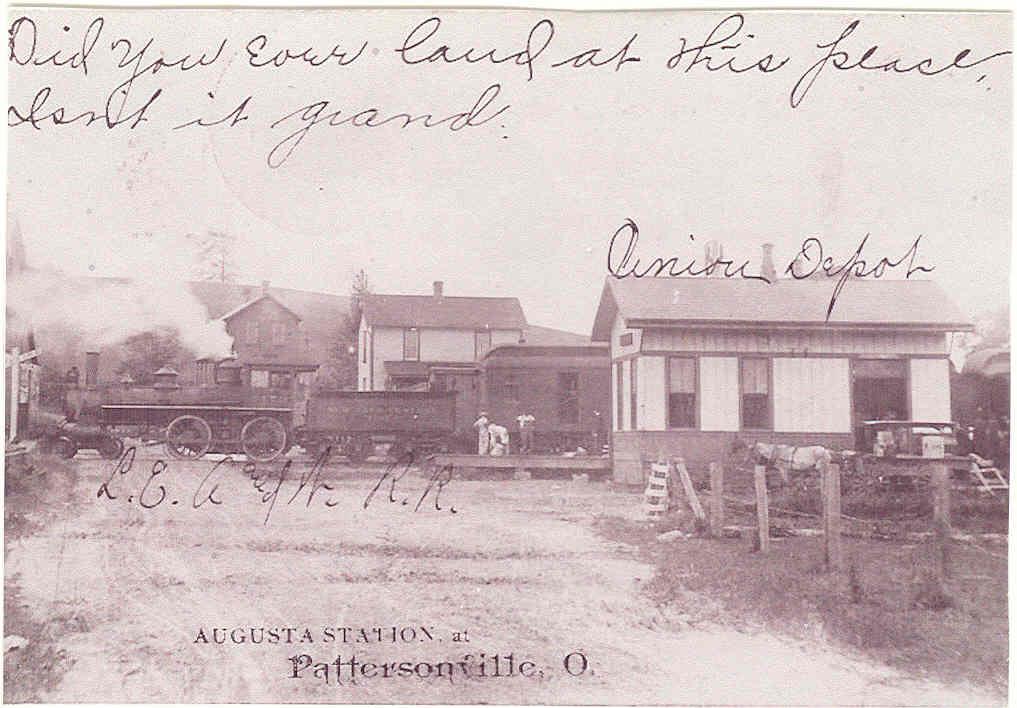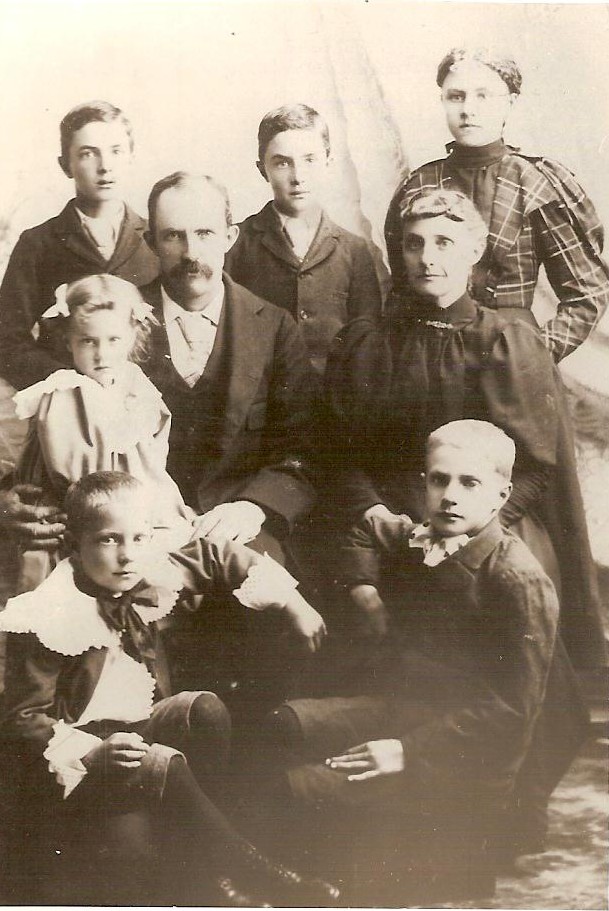by Taylor C. Woodward

STILLFORK VALLEY

Stillfork Creek, a branch of
Big Sandy, derives its name from the fact it does not have as much
fall, not as swift a current, a quieter running stream than most,
thus the name Stillfork. The low areas in the valley having a
heavy clay soil like most other low areas in this township, which
adapt to grasses for pasture best. Stillfork Valley is noted
for its many artesian wells up and down the valley.
We find the lowest point in Augusta Township in this valley being
near the junction of Stillfork and Muddyfork creeks, the elevation
being approximately 1039 feet. At Stillfork bridge, on C.R.
No. 10, the elevation is 1049 feet, this being near where Stillfork
Creek enters the township. This making a fall of 10 feet in
crossing the township. The elevation near where Muddyfork
Creek enters the township being approximately 1067 feet making a
fall of 28 feet in crossing the township.
The highest point in Augusta Township being Chestnut Knob, which is
1306 feet, located in the N.W. 1/4 of Sec. 19. The second high
point 1294 feet in the N.E. part of the N.E. 1/4 of Sec. 10.
Augusta and Quaker Cemetery about the same at 1250 feet.
Crawford Cemetery in Sec. 26, 1280 feet. Mt. Zion Church 1121
feet at crossroads. Pattersonville bridge 1045 feet.
At the time of the building of the Sandy and Beaver Canal, it was
contemplated deepening Stillfork Channel so boats might come up as
far as Pattersonville, to connect with the Sandy and Beaver Canal,
but was never started.
|
|
The right of way was obtained by the Cleveland, Youngstown and Pittsburgh Co. for the new railroad in late 1882, and early 1883 was built and operated for a period of time by this company. In 1884, the appraised valuation on the new railroad was $4000 per mile and the rolling stock $1000 per mile, which would make the county around $800 tax for the year.
On July 31, 1886, the railroad was sold to a committee of creditors for $100,000 and on Jan. 28, 1887, a new board of directors was appointed and the name of the company changed to Lake Erie, Alliance and Southern, and was operated under this name for a period of time. In 1902, the year the new depot was built, the road was operating under the name Lake Erie, Alliance and Wheeling. A short time later it was changed to the Lake Shore, Michigan and Southern, and finally to New York Central. In the early years of the railroad, the north end of the line beyond Alliance was a narrow gauge.
The first stop coming up Stillfork valley on the railroad after leaving Minerva, was at Cat Fish Pond, where a station, also a warehouse were located at one time.
|
|
Much freight passed through this station during the period before trucks and automobiles came into use. The following have been station agents at this station in the past: Conley Patterson, Charles Mills, George Eckles, Ralph Westfall, Mr. Bedell, John Dow, John McLain, Ben Lloyd, Dave Hess, Roy Roudebush, Homer Dennis, Howard Witherspoon, Lucille Weir and Scott Crawford; also Perry Mills, James Ashbrook, and Ellsworth Harsh.
A siding was put in from which cars were loaded and unloaded: fertilizer, lime, feed, ashes and many car loads of coal were shipped in, and many cars of hay and straw were shipped out. Stock yards were built along the siding, scales installed, and many cars of livestock were shipped out.
A warehouse was built along the siding by Conley Patterson and Edgar Crawford. After a period of time, Crawford sold his share to Patterson, who later sold to Mills brothers, Perry and Charles, they selling to John Rutledge, who later sold to F. R. Patterson and W. G. Hyatt, Patterson later selling out to Hyatt. A few years later Hyatt sold to Earl Yoder. After a period of time, Yoder sold out to L. D. Wilson, who continued to operate it until June 1959, when the warehouse and feed mill burned down.
John Rutledge and M. O. Leyda. Rutledge later selling out to Leyda, who owned it for a period of time, then selling out to W. A. Leatherberry and son, who operated it for a short time, then selling to George Leatherberry: Jacob Leatherberry and Pearl Miller being operators for different owners. George Leatherberry later selling out to the Andalusia Dairy Co., Homer Arnold operating the creamery until it was discontinued.
A post office was established in Pattersonville after the railroad was built. Mrs. Annie Cassidy being the first postmistress, Dec. 17, 1890. Harry McLain, the next postmaster, also having a general store, March 15, 1905. Roy Best, postmaster and general store, Feb. 26, 1909. Harry Henry, next postmaster and general store, Oct. 3, 1928. The post office was discontinued Oct. 31, 1957 and the mail is now delivered by the rural carrier on Route One, Minerva.
About the year 1903, the Farmers Telephone Company was organized by a group of local citizens, for the purpose of getting telephone service to as many of the local citizens as possible. Starting at Pattersonville as the central point where an exchange and switchboard was located, and has been operated by many different people. Starting the company by building two or three lines from Pattersonville a short distance to which many more were added later, and the ones extended farther they had built, and making connections with other companies' lines, until at the present time, the lines cover a part of four townships. The telephone company was sold to L. D. Wilson, who took possession Aug. 1937 , and has been operated and maintained by the Wilson family from then to the present time. Mr. Wilson changed the lines to the dial system May 20, 1962. The name having been changed to the Pattersonville Telephone Company when the company changed owners.
The following have had blacksmith shops in Pattersonville in the past: Jos. Wickline, Robert Campbell, Grover Davis and John Davis, also Vince Thomas.
Watheys Crossing being the next stop up the valley, a small station was built and they called it Watheys. A siding was put in where cars were loaded and unloaded. Feed, fertilizer, lime and coal were shipped in and hay, straw, coal and charcoal were shipped out. Stock pens were built, scales installed and livestock was shipped to market.
Up the railroad a short distance, brick kilns were built, the bricks being made nearby. They made wood charcoal by burning wood in these kilns or ovens with but little access of air, using our native trees, the willow being used in making the finer grades of charcoal, which was used in the manufacture of gunpowder. In 1902, the old station was replaced by a new passenger and freight depot, by the L.E.A. & W. Railroad.
Up the railroad a mile more or less, a small building was erected near the railroad at Hewitts Crossing, by William F. Specht, where he had a post office, established Dec. 8, 1890 and a general store, from which Specht derives its name.
In 1893, a creamery and cheese factory called Gold Spring Creamery was built at Specht by a stock company of local citizens. The officers being: Pres. Wesley Snively, Sec. Will F. Specht, Treas. J. C. Patterson, who together with Jason Kennedy and Eli Crawford, formed and constituted the board of directors. The creamery and cheese factory was in operation for an unknown period of time, when Will F. Specht bought them out, after which he and Henry Herrington operated the plant for another period of time. Then they discontinued operating the plant, and Mr. Specht made the building into a residence, a general store and post office, which the Spechts continued to operate for many years. Prior to the building of the creamery and the cheese factory, there had been a small creamery in operation for a short period one-fourth mile up the road.
A stave mill, which was built near Specht at an early date after the railroad had been built, did a large business making barrel staves out of the native trees and loading them on cars on the siding that had been put in near Specht, by the railroad company, then shipping them to the distilleries, where they were sold.
The swamps and thickets along Stillfork Creek, in the vicinity of Specht and Watheys, have recently been found to contain shrubs, flowers and plants not common to this vicinity, also a kind of cricket foreign to this section. It has been contemplated making a preserve in this locality.
Later research revealed that M. O. Leyda bought the Gold Spring Creamery Sept. 1897, and must have moved the machinery and equipment to Pattersonville and used it when he and John Rutledge built the creamery there.



